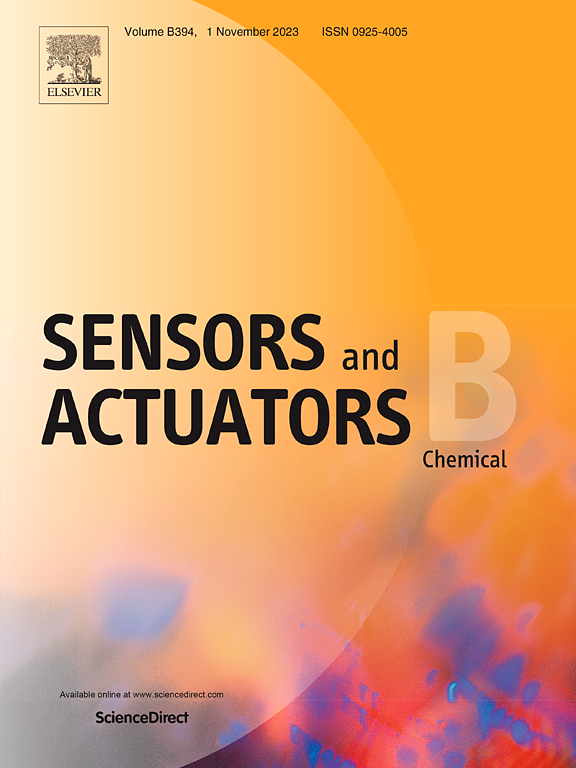高效检测三乙胺的多金属氧酸盐-钼酸铋II型异质结构化学电阻器
IF 8
1区 化学
Q1 CHEMISTRY, ANALYTICAL
引用次数: 0
摘要
Bi2MoO6 (BMO)具有特殊的钼酸盐晶格结构、高比表面积、多活性位点、表面氧空位丰富等优点,在气体传感器中具有潜在的应用前景。然而,高载流子复合现象限制了BMO的传感性能。近年来,多金属氧酸盐(pom)作为电子受体被证明可以促进电子迁移,提高半导体的传感性能。本研究首次采用水热法对磷钨酸(PW12)进行了改性,制备了BMO气敏材料。通过降低电子-空穴复合概率,可以有效地提高BMO原有的气敏性能。结果表明,最佳复合纳米花传感器(BMO/3%PW12)在2.67 ~ 100 ppm的三乙胺(TEA)气体中具有较高的响应。与纯BMO传感器相比,BMO/3%PW12的灵敏度提高1.9倍,响应和恢复速度加快。它还表现出良好的线性和低的理论检测限为0.2 ppm。同时对传感器的稳定性和再现性进行了测试和比较分析。本文提出了一种创新的策略,通过引入聚甲醛作为电子受体,开发基于溴代氧化物的高灵敏度气体传感器。本文章由计算机程序翻译,如有差异,请以英文原文为准。
Polyoxometalates Mediated-Bismuth Molybdate Type II Heterostructure Chemiresistor for Efficient Triethylamine Detection
Bi2MoO6 (BMO) has potential applications in gas sensors due to its special molybdate lattice structure and high specific surface area, multiple active sites, the abundance of oxygen vacancies on its surfaces. However, sensing performances of BMO are limited by high carriers recombination phenomenon. For the past few years, polyoxometalates (POMs) have been proved as electron acceptors which can promote electron migration and improve sensing performance of semiconductors. In this study, we modified phosphotungstic acid (PW12) into BMO gas-sensitive materials for the first time via hydrothermal method. By reducing the electron-hole recombination probability, the original gas-sensitive performance of BMO can be efficiently enhanced. As a result, the optimal composite nanoflowers sensor (BMO/3%PW12) showed high response of 2.67 to 100 ppm triethylamine (TEA) gas. Compared to pure BMO sensor, the sensitivity of BMO/3%PW12 is 1.9 times higher with accelerated response and recovery speed. It also exhibits good linearity and a low theoretical detection limit of 0.2 ppm. Meanwhile, the stability, and reproducibility of the sensors were tested and comparatively analyzed. In this paper, an innovative strategy is proposed to develop BMO-based gas sensors with high sensitivity by introducing POMs as electron acceptors.
求助全文
通过发布文献求助,成功后即可免费获取论文全文。
去求助
来源期刊

Sensors and Actuators B: Chemical
工程技术-电化学
CiteScore
14.60
自引率
11.90%
发文量
1776
审稿时长
3.2 months
期刊介绍:
Sensors & Actuators, B: Chemical is an international journal focused on the research and development of chemical transducers. It covers chemical sensors and biosensors, chemical actuators, and analytical microsystems. The journal is interdisciplinary, aiming to publish original works showcasing substantial advancements beyond the current state of the art in these fields, with practical applicability to solving meaningful analytical problems. Review articles are accepted by invitation from an Editor of the journal.
 求助内容:
求助内容: 应助结果提醒方式:
应助结果提醒方式:


